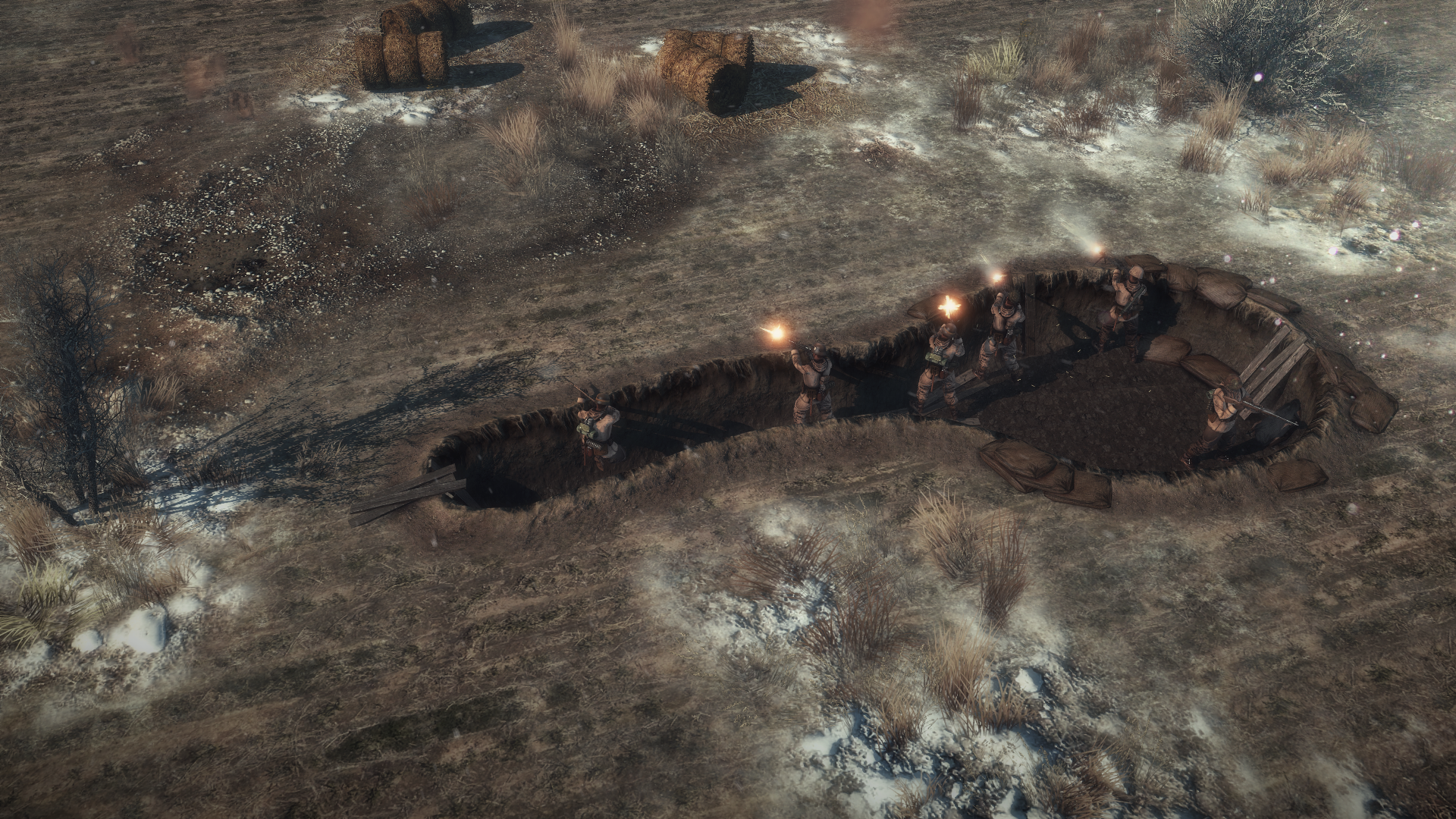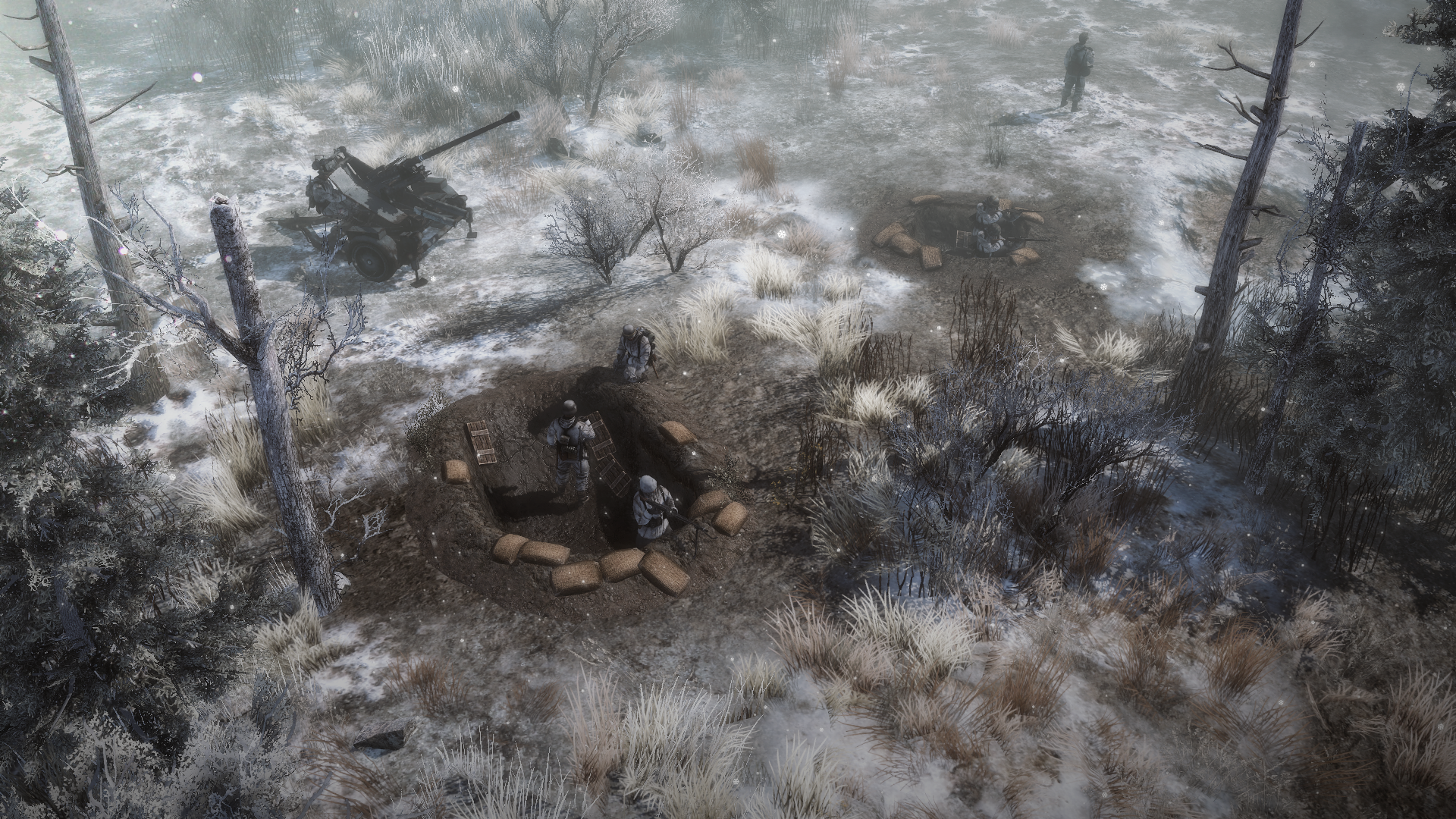
Sep 30, 2016
Call to Arms - Gates of Hell: Ostfront - Cule

Welcome to the 43th entry in our Devblog. It is time to talk about one of the new features of GoH - entrenchments.
Entrenchments are classified into two types: regular and engineering entrenchments. The latter type only come with field engineers or other unique units, and take more time to dig.
Foxholes
Foxholes are a regular entrenchment that most infantrymen can build. It takes little time to build them and they give moderate protection from a prone position. Most regular infantrymen can build a foxhole using their entrenching spade.

HD link
Trench line
Field engineers (not to be confused with miners) are not just responsible for setting up barbed wire fences, anti tank hedgehogs or other obstacles - they can now also dig infantry trenches! The trenches take much more time than a foxhole to dig but have numerous advantages - They can fit a whole squad, they offer more protection since soldiers can crouch behind it, and many of these trenches placed in a line will form a formidable line of defence! While some players won't like these defensive means because they prefer offensive moves, a well placed trench can be a key game changer especially in gamemodes like Frontlines.

HD link
MG nest
Your MG detachment comes with additional support infantry which in some cases are ammo carriers or close quarter assistants. The MG leader will either carry the MG in assault pose or carry it packed in it's tripod cradle for field-mounting it as an emplacement. While setting up, one of the mentioned assistants can dig a pit with suitable space for the tripod and the ammo carriers.
Mortar Pits
Some field engineers can build a mortar pit which grants all-round protection for a medium mortar which also is set up automatically inside the pit. Moreover this deep pit has a shallow area for infantry positions. This entrenchment is unique and does not apply to regular mortars which just carry a small sandbag defence.
Tank Ditches
Have you ever thought about how much you like a tank in a defensive viewpoint but you despise the terrible hull armour and can only use it in a hull-down position? Well, its time to build a tank ditch! They are built by field engineers and some are carried in special tanks as well ('veteran' tanks with special characteristics and experienced crews). A large portion of the hull is buried and so you have a much lower profile, in most cases with only the turret sticking out. Note that tanks can exit and enter the ditch and it doesnt turn them into sitting ducks.
More to come soon… Let us know if you have any particular entrenchment idea.

HD link
















